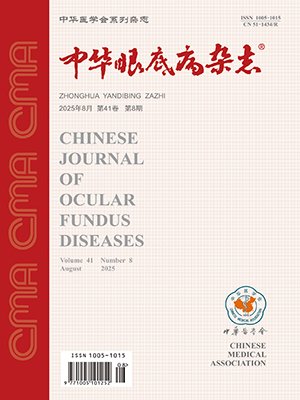ObjectiveTo investigate the therapeutic effects of thrombolysis infusion via microcatheter on the treatment of central retinal artery occlusion(CRAO). MethodsUrokinase (UK) was directly infused via ophthalmic artery (OA) by microcatheter (6 patients) or via intravenous (7 patients) to dissolve the thrombus. The patency of the artery was evaluated by fundus fluorescein angiography (FFA), and the effect of fibrinolytic activity on the systemic changes was observed by blood biochemical examination simultaneously. ResultsIn 6 patients in the microcatheter group, 5 had completely and 1 had partly reopened OA on the morrow of UK infusion with the patency rate of 83.33%, while in 7 patients in vein group, 3 completely reopened, 2 partly reopened and 2 obstructed OA were found with the patency rate of 42.86%. The difference between the two groups was significant. No obvious change of index of blood coagulation system was found in catheter group, which had great disparity compared with the vein group.ConclusionUrokinase infusion via microcatheter in CRAO has better therapeutic impact and smaller effect on systemic action. (Chin J Ocul Fundus Dis, 2005,21:16-19)
Citation: YAO Yong,SHEN Xiaowen,WU Youkai,et al.. Thrombolysis infusion via microcatheter treating central retinal artery occlusion. Chinese Journal of Ocular Fundus Diseases, 2005, 21(1): 16-19. doi: Copy
Copyright © the editorial department of Chinese Journal of Ocular Fundus Diseases of West China Medical Publisher. All rights reserved




